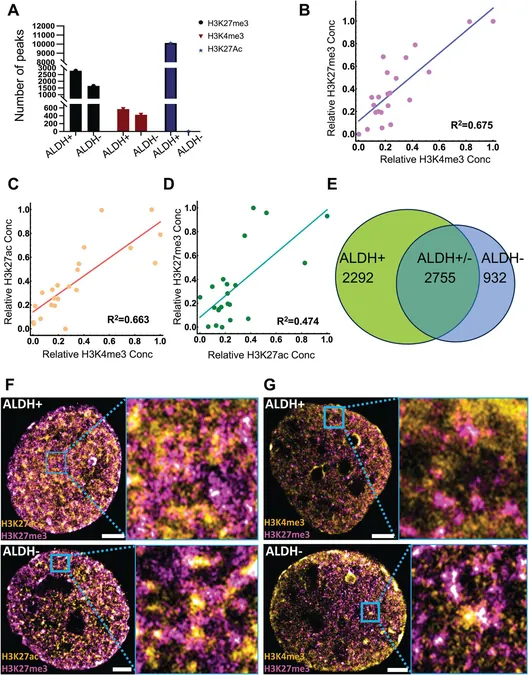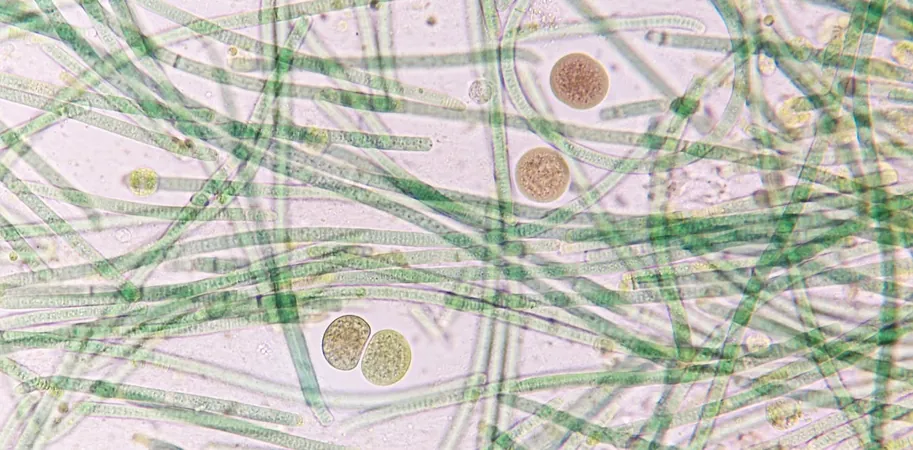
Revolutionary Insights into Ovarian Cancer: Targeting Chromatin Packing Domains Could Change Everything!
2025-03-31
Author: Mei
Introduction
In an exciting breakthrough, scientists at Northwestern Medicine have unveiled crucial insights into the genetic architecture of ovarian cancer stem cells, as detailed in a new study published in the journal Advanced Science. This discovery may pave the way for innovative therapeutic strategies against this aggressive disease.
The Role of Chromatin in Cancer
At the heart of cellular function lies chromatin, a complex formed when DNA entwines with proteins within the nucleus. Within chromatin, structures known as packing domains emerge as chromatin fibers fold together. These packing domains play an essential role in the regulation of gene expression, DNA replication, and the prevention of genetic damage—a process that often goes awry in cancer.
Challenges Posed by Cancer
Dr. Daniela Matei, the lead researcher and chief of Reproductive Science at Northwestern's Obstetrics and Gynecology Department, highlights the unique challenges cancer poses: “While we are aware that DNA processes become disrupted in cancer, we still have much to uncover regarding how cancer alters chromatin organization.”
Investigation of Cancer Stem Cells
Cancer stem cells, a rare yet powerful subset of cancer cells, exhibit the ability to self-renew and give rise to diverse cancer cell populations, making them the root of cancer resilience. These cells, known for their resistance to standard chemotherapy treatments, prompted Matei and her team to investigate their distinct features.
Cutting-Edge Technology and Findings
Utilizing cutting-edge optical spectroscopic nanosensing technology, researchers, including co-senior author Dr. Vadim Backman, the Sachs Family Professor of Biomedical Engineering, emerged with startling findings. They discovered that ovarian cancer stem cells possess a greater prevalence of chromatin packing domains, granting them enhanced transcriptional flexibility. This adaptability allows the cancer cells to swiftly alter their gene expression in response to therapeutic stressors, such as chemotherapy drugs.
Differential Gene Activation
Through advanced sequencing techniques, the study identified differential gene activation between cancer stem cells and their non-stem counterparts, revealing that these stem cells specifically activated genes associated with DNA repair. This discovery sheds light on the adaptability of ovarian cancer stem cells, suggesting new potential therapeutic targets, according to Backman.
Reprogramming Cellular Memory
“Cancer stem cells excel at adapting to anti-cancer drugs due to their unique cellular transcriptional memory, which is fundamentally encoded in chromatin structure,” Backman explained. “Our findings indicate that it is possible to employ small molecules to reprogram this memory, inhibiting the cells from acquiring stem cell characteristics, thereby enhancing the efficacy of existing therapies against tumors.”
Screening for New Drugs
In their quest for improved treatment options, the researchers screened various drugs aimed at reducing the number of packing domains within cancer stem cell lines. They uncovered that DNA methyltransferase inhibitors, alongside other histone modifiers, notably decreased the packing domain numbers in these cancer cells, thus making them more susceptible to chemotherapy.
Successful Laboratory Outcomes
“Using epigenetic drugs, we demonstrated a significant reduction in packing domains, prompting stem cells to differentiate into non-stem cells. This approach has allowed us to effectively eradicate cancer cells in laboratory settings, making them more responsive to chemotherapy treatments,





 Brasil (PT)
Brasil (PT)
 Canada (EN)
Canada (EN)
 Chile (ES)
Chile (ES)
 Česko (CS)
Česko (CS)
 대한민국 (KO)
대한민국 (KO)
 España (ES)
España (ES)
 France (FR)
France (FR)
 Hong Kong (EN)
Hong Kong (EN)
 Italia (IT)
Italia (IT)
 日本 (JA)
日本 (JA)
 Magyarország (HU)
Magyarország (HU)
 Norge (NO)
Norge (NO)
 Polska (PL)
Polska (PL)
 Schweiz (DE)
Schweiz (DE)
 Singapore (EN)
Singapore (EN)
 Sverige (SV)
Sverige (SV)
 Suomi (FI)
Suomi (FI)
 Türkiye (TR)
Türkiye (TR)
 الإمارات العربية المتحدة (AR)
الإمارات العربية المتحدة (AR)